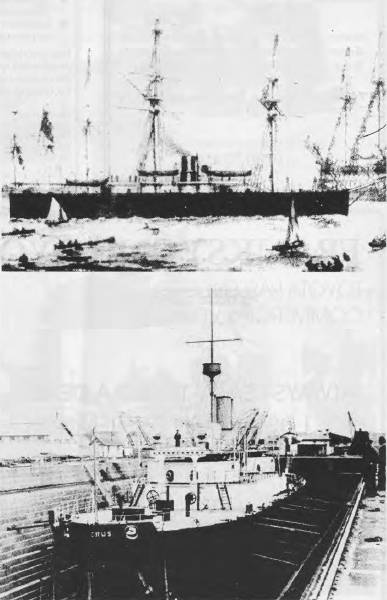- Author
- A.N. Other
- Subjects
- Colonial navies, History - pre-Federation
- Tags
-
- RAN Ships
- None noted.
- Publication
- April 1992 edition of the Naval Historical Review (all rights reserved)
In 1866, the Government of Victoria requested a ship from the British Admiralty to bolster the Colony’s defences. At this time, in England, a new type of ship designed for harbour defence was being built.
These monitors, as they were known, were a radical change for ships of the Royal Navy. They dispensed with sails as the main form of propulsion, were steam-driven, iron-plated and had their entire armament in turrets. In comparison with the grace of the sailing ships of the day, they were ugly and monstrous. The Lords of the Admiralty named them after the hideous monsters of classical legend – Cerberus, Cyclops, Gorgon, Hecate and Hydra.

The monitor CERBERUS, the sixth ship of the Royal Navy to bear the name, was taken over by the Victorian Government as a guardian of Port Phillip Bay. She was launched on 2 December, 1868, and left the Thames on 29 October, 1870, bound for Australia.
Throughout the hazardous voyage, she managed an average speed of only four knots, and arrived at Fremantle on 18 March 1871. She painted ship in Albany and eventually entered Port Phillip on 9 April, where most of Melbourne’s population turned out to see her.
CERBERUS presented a rather ungainly appearance and was described in one newspaper as ‘an elongated gasometer’. Apart from rare exercises in the Bay, she spent more than thirty years at her moorings off Williamstown as a floating fortress and kept Port Phillip Bay virtually impregnable. However, these were years free from direct threat to Australia and when defence once again became a matter for concern at the outbreak of the First World War she was, of course, obsolete.
In 1920, the old monitor CERBERUS was removed from the Navy List. She remained off Williamstown for a few years and was eventually sold, first to a private firm, and then to the municipal authorities at Black Rock who filled her with concrete and sank her as a breakwater.
She can still be seen today- a somewhat sad end for a ship which had stolidly guarded Victorian shores for so long.




